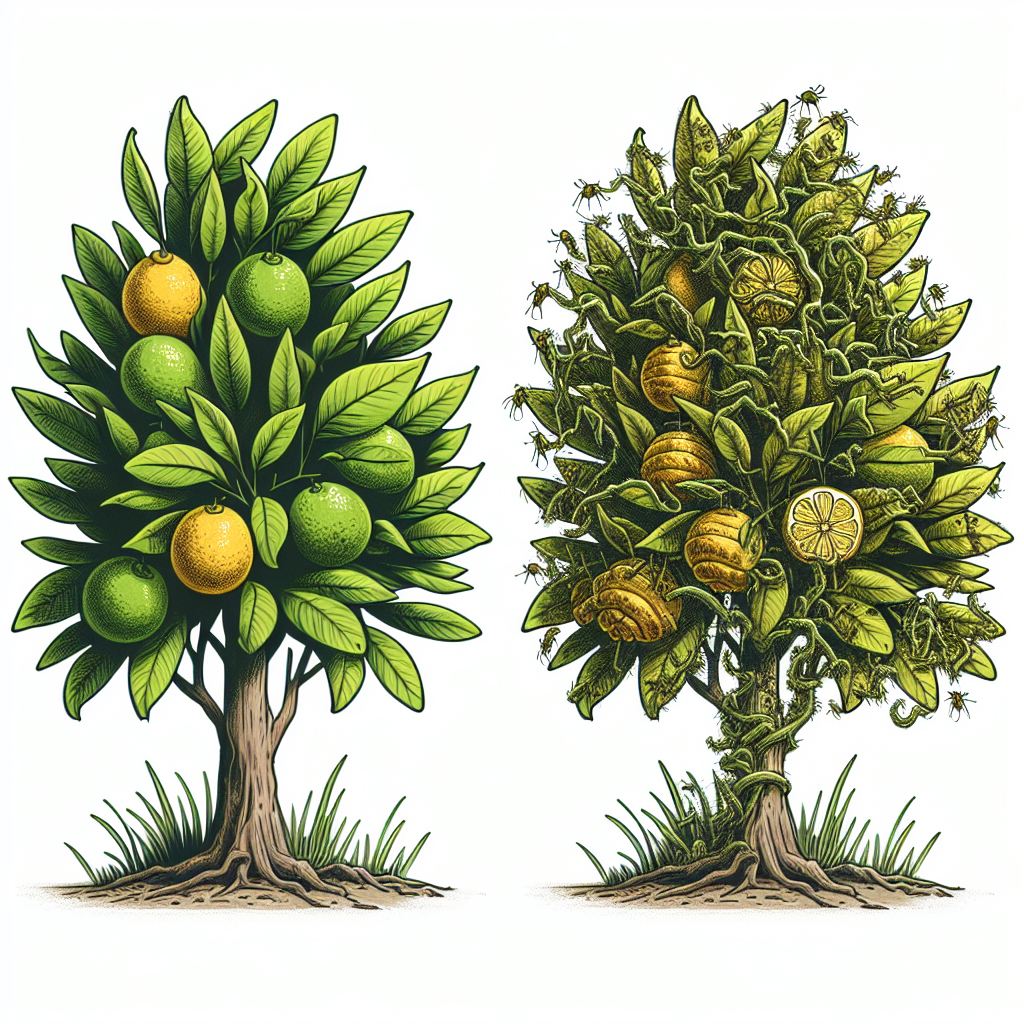Agriculture Pesticide Azoxystrobin Fungicide Factories 2025: Driving Sustainable Crop Protection and Yield Revolution
Summary:
In 2025, the agriculture sector continues to face significant challenges. Rising fungal diseases threaten global food security and crop yields. Azoxystrobin-based fungicides have become a cornerstone for sustainable crop disease management, owing to their broad-spectrum efficacy and systemic protection. This article comprehensively explores the evolving landscape of agriculture pesticide azoxystrobin fungicide factories, the manufacturing processes, availability, and the rise of biofungicide innovations supporting sustainable agriculture and resilient crop yields.
“Global azoxystrobin fungicide production is projected to exceed 60,000 tons by 2025, fueling advanced crop protection technologies.”
Table of Contents
- Facing the Challenges: Fungal Diseases Threatening Agriculture in 2025
- Understanding Azoxystrobin: The Powerful Cornerstone of Crop Disease Management
- Agriculture Pesticide Azoxystrobin Fungicide Factories: Evolution and Innovation in Manufacturing (2025)
- Access and Availability: How Farmers Source Azoxystrobin 2F Fungicides
- Biofungicide Integration and Emerging Trends
- Comparative Table: Azoxystrobin vs Biofungicide Innovations (2025)
- Technological Advancements in Disease Monitoring and Farm Management
- Smart Tools and Farmonaut Solutions for 2025 Farmers
- Frequently Asked Questions (FAQ)
- Conclusion: Sustainable Crop Protection for the Future
Facing the Challenges: Fungal Diseases Threatening Agriculture in 2025
By 2025, the agricultural sector continues to face significant and evolving threats due to the spread of fungal diseases that attack a wide range of crops including cereals, fruits, and vegetables. These diseases are not only increasing in frequency but are rapidly adapting to changing climate patterns and farming practices. They threaten food security by reducing yields, impacting farmers‘ incomes, and destabilizing supply chains worldwide.
- Changing climate patterns: Increased temperature and humidity levels create conducive conditions for fungal pathogen development and spread.
- Pesticide resistance: Overreliance on specific chemical classes (including older fungicides) has led to evolved resistance in pathogens.
- Crop intensification: High-density plantings, coupled with globalized trade, aid the movement and establishment of new fungal species.
- Stricter regulations: There is a worldwide push toward sustainable and environmental compliance, compelling the sector to seek innovative alternatives and more efficient disease management tools.
As a result, one of the best ways to maintain crop protection is to employ versatile, broad-spectrum fungicides—especially those with systemic action. This is where azoxystrobin fungicides, particularly from leading agriculture pesticide azoxystrobin fungicide factories, become invaluable in the arsenal for sustainable disease management.
Understanding Azoxystrobin: The Powerful Cornerstone of Crop Disease Management
Azoxystrobin is a synthetic strobilurin fungicide and is widely recognized as one of the most effective solutions for controlling major fungal diseases affecting modern agriculture. Its effectiveness in managing a range of pathogens—across cereals, fruits, and vegetables—has made it an essential part of farmers‘ protective strategies in the years leading to, and well beyond, 2025.
Azoxystrobin’s Mode of Action and Efficacy
Azoxystrobin acts by inhibiting mitochondrial respiration in fungi, specifically at the complex III (cytochrome bc1) site. By halting electron transfer, it causes a rapid arrest in energy production, effectively shutting down cellular activity and stopping the disease development. This systemic action enables the fungicide to travel within plant tissues, protecting both treated and emerging new growth.
- Broad-spectrum efficacy: Azoxystrobin is effective against powdery mildew, rust, leaf spot, and other problematic pathogens.
- Preventive and curative: Its action is primarily preventive but also helps to control established infections. Early application leads to maximum benefit.
- Versatile formulations: Azoxystrobin is available in various suspensions, with azoxystrobin 2F (2% active ingredient in a liquid base) being particularly popular among large and smallholder farmers alike.
- Crop safety: The low phytotoxicity profile makes azoxystrobin safe for a wide array of crops when used as directed.
Why Azoxystrobin Fungicides Remain Essential in 2025 and Beyond
In the context of increasingly aggressive and resistant fungal pathogens, azoxystrobin’s unique combination of preventive and systemic action, together with its capacity to integrate well in IPM (Integrated Pest Management) systems, ensures it remains a cornerstone of sustainable crop protection. Furthermore, azoxystrobin’s flexibility allows for tailored products—such as azoxystrobin 2F—for regional agriculture, supporting both export-focused large-scale farming and local smallholder production.
Crop Range and Fungal Diseases Controlled
- Cereals: Effective against leaf spot, rusts, powdery mildew, and sheath blight in rice, wheat, barley, and maize.
- Fruits: Protects apples, grapes, citrus, and berries from anthracnose, scab, and Alternaria.
- Vegetables: Used in tomatoes, potatoes, cucurbits, onions, and more for early/late blight, downy mildew, and leaf spot diseases.
- High-value crops: Useful in turf, ornamentals, and specialty crops for targeted disease outbreaks.
Agriculture Pesticide Azoxystrobin Fungicide Factories: Evolution and Innovation in Manufacturing (2025)
The manufacturing landscape for azoxystrobin fungicides in 2025 has evolved significantly. Agriculture pesticide azoxystrobin fungicide factories and specialized azoxystrobin 2F fungicide manufacturers are at the cutting edge of process innovation, quality assurance, and environmental compliance.
What Sets Leading Factories and Manufacturers Apart?
- Advanced synthesis methods: Factories now use integrated, high-purity reactions and microencapsulation or nanotechnology for improved active ingredient stability.
- Compliance and sustainability: Modern manufacturers operate under rigid environmental and safety standards, with waste minimization, worker safety programs, and emission control systems.
- Process optimization: By utilizing automated blending, in-line quality control, and AI-driven formulation engines, factories achieve better consistency and minimize batch-to-batch variability.
- Packaging innovation: Leak-proof, user-friendly, and recyclable packaging options reduce ecological impact and support regulatory compliance worldwide.
- Formulation diversity: Azoxystrobin 2F suspensions, water-dispersible granules, and specific blends offer flexible choices to meet farmers’ crop and disease needs.
Due to such advancements, today’s agriculture pesticide azoxystrobin fungicide factories and manufacturers are able to deliver products with predictable performance, higher efficacy, and improved environmental footprints compared to previous generations.
Access and Availability: How Farmers Source Azoxystrobin 2F Fungicides
Ensuring reliable access to quality crop protection solutions like azoxystrobin fungicides is critical for farmers everywhere. In 2025, the distribution of fungicides is diverse and increasingly digital, reflecting the changing landscape of agricultural inputs.
- Local agricultural cooperatives: These groups serve as core distribution points in rural areas, providing farmers with trusted, locally adapted azoxystrobin 2F products and advice.
- Agro-dealers and input retailers: Specialized outlets, especially in key crop zones, offer tailored recommendations based on regional pathogen profiles and crop types.
- Online platforms: Digital channels bring azoxystrobin and biofungicide options within easy reach. This democratizes access—even for smallholder farmers—and provides transparency on pricing, authenticity, and usage.
- Direct manufacturer support: Leading agriculture pesticide azoxystrobin fungicide manufacturers supply technical support, training, and resources for optimal product use and disease control strategies.
Demand for azoxystrobin-based solutions—such as azoxystrobin 2F—remains strong because they help increase crop resilience, stabilize yields against climate variability, and provide proactive defense against evolving fungal disease threats.
Buy 4 Farmers Azoxystrobin: ? Tips When Purchasing Fungicides in 2025
- Check product labeling: Confirm active ingredient percentage, approval status, and recommended crops/disease spectrum.
- Source from reliable manufacturers: Only trust recognizable brands or authorized retailers – this reduces risks of counterfeit or substandard products.
- Demand safety & ecological data: Reputable agriculture pesticide azoxystrobin fungicide manufacturers supply information on toxicity, environmental precautions, and best-use practices.
- Combine chemical & biological: In integrated regimes, rotating azoxystrobin-based fungicides with biofungicides (or using premixed products) can help reduce resistance pressure and promote sustainability.
Today’s farmers can easily compare options across platforms and select the best fit solutions for their own specific disease management requirements.
With the Farmonaut app platform, farmers can monitor crop health, analyze disease outbreaks, and receive AI-based recommendations to optimize disease management—all from the convenience of their smartphone or browser (learn more below).
“By 2025, over 40% of new fungicides in factories will integrate biofungicide innovations for sustainable disease management.”
Biofungicide Integration and Emerging Trends
While synthetic azoxystrobin fungicides continue to command a central role in sustainable crop protection, the roadmap of agricultural disease management in 2025 now emphasizes eco-friendly and innovative alternatives—specifically, biofungicides.
What Are Biofungicides and How Are They Changing Agriculture?
- Biofungicides are based on naturally occurring organisms like bacteria, fungi, or botanical extracts. They target pathogens through mechanisms distinct from chemical fungicides.
- Examples include Bacillus subtilis, Trichoderma spp., as well as plant-derived oils and proteins.
- These products can directly antagonize disease-causing fungi, out-compete them on plant surfaces, or trigger plant immune responses (systemic acquired resistance).
- Combined with traditional azoxystrobin or as part of integrated solutions, biofungicides can reduce chemical load, delay the onset of resistance, and promote soil and ecosystem health.
In 2025, it is increasingly common for agriculture pesticide azoxystrobin fungicide factories and azoxystrobin 2F fungicide manufacturers to offer integrated biofungicide and chemical packages, or even pre-mixed formulations optimized for specific crops and disease pressures.
Benefits of Integrating Azoxystrobin and Biofungicides
- Synergistic action: Enhances disease management by targeting pathogens at multiple biological points, minimizing survival and adaptation risks.
- Reduced residue: Helps meet global food safety standards and import/export regulations by lowering chemical residues on harvested produce.
- Soil and environmental health: Protects beneficial microbiota, supports pollinators, and lowers the risk of groundwater contamination.
- Resistance management: By rotating or combining modes of action, integrated systems delay or prevent resistance buildup in target pathogens.
For farmers seeking to buy 4 farmers azoxystrobin or diversify protection strategies, the thriving market in 2025 offers a plethora of integrated, sustainable products.
Comparative Table: Azoxystrobin vs Biofungicide Innovations (2025)
Below is a comparative feature table outlining key differences between leading azoxystrobin fungicide products and emerging biofungicide innovations in 2025. This snapshot can help farmers, agronomists, and input buyers make informed decisions for optimal disease management, yield improvement, and sustainability.
*All figures represent 2025 estimates for best-practice applications in high-value food crops.
Technological Advancements in Disease Monitoring and Farm Management
As agriculture rapidly adopts precision and digital farming solutions in 2025, the landscape for sustainable crop protection is further transformed by satellite monitoring, AI-powered insights, and blockchain traceability.
- Satellite monitoring: Utilizing satellite-based data for real-time tracking offers unprecedented visibility into crop health, stress detection, and emerging disease hotspots. Early warnings mean more timely application of fungicides and optimized disease management schedules.
Farmonaut is at the forefront—delivering affordable satellite-driven insights to help optimize resource use, improve yields, and promote ecological balance. - AI and Smart Advisory Systems: Systems analyze weather, soil, and crop imagery to recommend the right mix/rotation of azoxystrobin fungicides and biofungicides—maximizing protective value while reducing unnecessary input.
- Blockchain traceability: Enables transparency from input selection to market delivery. This allows farmers and stakeholders to certify sustainably produced crops, supporting food safety and consumer trust.
See how blockchain-based traceability can benefit modern farms. - Yield prediction and risk assessment: Technologies cross-reference satellite crop monitoring and disease models with insurance analytics. This secures crop loans and expands farmers’ access to financing.
Explore satellite-powered crop loan and insurance solutions.
Smart Tools and Farmonaut Solutions for 2025 Farmers
As our planet strives for sustainable food security, innovative, scalable technology is essential in ensuring ongoing agricultural productivity and resilience. At Farmonaut, we are dedicated to making satellite-driven insights affordable and accessible for all stakeholders in agriculture and broader industry sectors.
- Real-Time Satellite Monitoring: Our platform uses multispectral images to provide actionable data—such as NDVI for vegetation health, soil moisture status, and early signs of disease—empowering farmers and agricultural managers to react ahead of major crop threats.
- AI-based Advisory: Jeevn, our AI system, analyzes evolving climate, soil, and crop factors to create optimized disease management advisories—integrating the right use of azoxystrobin 2F fungicides or biofungicides when needed.
- API Access for Custom Solutions: Integrate Farmonaut’s API and leverage satellite, weather, and advisory data through developer docs into your platforms, tools, or mobile apps—for truly data-driven crop protection workflows.
- Environmental and Carbon Footprint Tracking: Monitor your operation’s environmental impact and implement best practices. Visit Farmonaut’s carbon footprinting page to learn how to minimize agricultural emissions and promote greener practices.
- Fleet Management: For large agri-businesses or cooperatives, optimize equipment usage and save resources. See our fleet management tools.
- Large-Scale and Forest Advisory: Streamline plantation and landscape decisions with AI-powered advisory for crops and forests.
Our platform is accessible via web, Android, and iOS—offering flexibility for farmers of all sizes to monitor, act, and succeed from anywhere in the world.
Frequently Asked Questions (FAQ)
1. What makes azoxystrobin fungicides stand out compared to other chemical fungicides?
Azoxystrobin is a strobilurin fungicide with systemic action, meaning it moves within the plant, protecting new and existing growth. Its broad-spectrum efficacy provides preventive and some curative control for a wide range of fungal pathogens, such as powdery mildew, rust, and leaf spot. Its flexible formulations and favorable crop safety profile make it a staple for disease management in cereals, fruits, and vegetables.
2. How do I ensure that I buy reliable azoxystrobin 2F fungicide in 2025?
Only purchase from authorized dealers, agricultural cooperatives, or well-known online and physical retailers. Always check the label for active ingredient percentages, expiration dates, and manufacturer certification. Reputable companies provide comprehensive safety and ecological data.
3. Why are biofungicides becoming more popular in agricultural factories?
Biofungicides offer eco-friendly alternatives and complement synthetic options by targeting pathogens through new mechanisms, promoting sustainable disease control, reducing chemical residue, and protecting environmental health. By 2025, more than 40% of new fungicides from leading manufacturers will incorporate biofungicide innovations.
4. Can azoxystrobin and biofungicide products be used together?
Yes, integrated use or rotation helps enhance disease control efficacy, delays the emergence of resistant pathogens, and supports environmental goals. Always follow manufacturer guidelines when mixing or rotating products.
5. What technologies are available for monitoring crop health and planning disease management?
In 2025, satellite-based platforms (like Farmonaut), AI-powered advisories, and blockchain traceability systems are available to monitor disease outbreaks, recommend optimal control interventions, and support regulatory compliance for residue limits and sustainability.
6. Are there ways to track and reduce the environmental impact of pesticide applications?
Yes, modern manufacturers supply environmental impact statements. Farmonaut also provides carbon and ecological footprint monitoring tools for sustainable agriculture. Learn more at our carbon footprinting page.
Conclusion: Sustainable Crop Protection for the Future
The journey to sustainable crop protection in 2025 is driven by continuous advancement in agriculture pesticide azoxystrobin fungicide factories, soaring innovation in biofungicide development, and the thoughtful integration of satellite and digital technologies. Azoxystrobin fungicides remain a cornerstone for controlling a broad spectrum of fungal diseases in crops, and their manufacturing has evolved to focus on quality, safety, and environmental impact reduction.
Meanwhile, biofungicide alternatives introduce additional resilience and sustainability, amplifying the protection arsenal available to modern farmers. The ability of farmers to access a suite of diverse, reliable options—whether they’re seeking to buy 4 farmers azoxystrobin or select a cutting-edge integrated product—helps stabilize yields, safeguard food security, and promote ecological balance worldwide.
We anticipate that, with ongoing research, cooperation among manufacturers, and the digital tools provided by platforms like Farmonaut, global agriculture can meet the rising challenges of fungal disease management. This will result in not only greater food security and yield stability but also a future where nature and productivity thrive hand in hand.
Start leveraging next-generation monitoring and disease management: Sign up for Farmonaut’s satellite-powered platform today or join as a developer to build your own precision agriculture tools. With real-time, actionable insights, the future of sustainable farming is in your hands!











